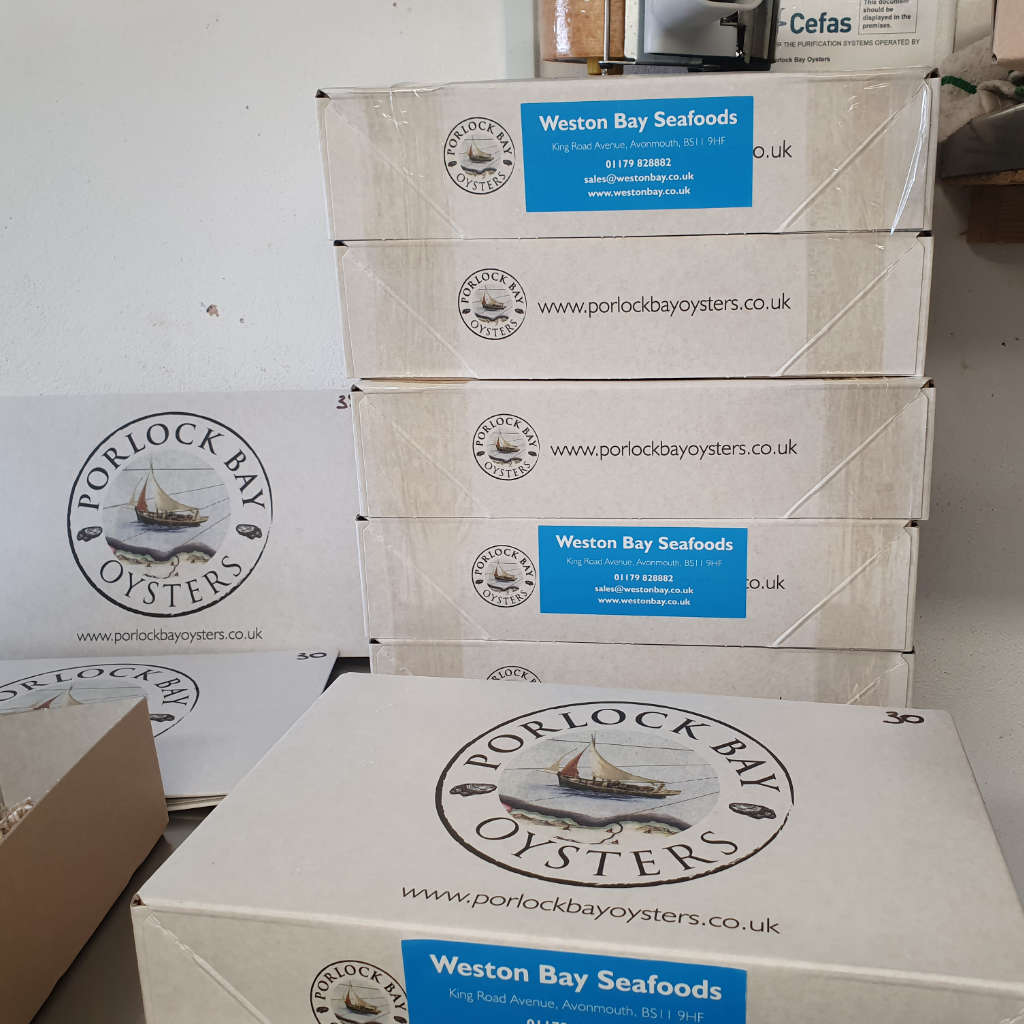The Pacific oyster, Japanese oyster, or Miyagi oyster, previously and currently also known as Crassostrea gigas, is an oyster native to the Pacific coast of Asia. It has become an introduced species in North America, Australia, Europe, and New Zealand. The majority of the pacific oysters we grow are Triploids.
What makes them unique? Triploid oysters have three sets of chromosomes and offer two important advantages in their lifecycle. Because they’re sterile (due to their uneven chromosome number), they don’t expend energy reproducing during the summer months or lose body weight once they’ve spawned out. They remain firm and plump and grow to market size much faster than a diploid oyster.
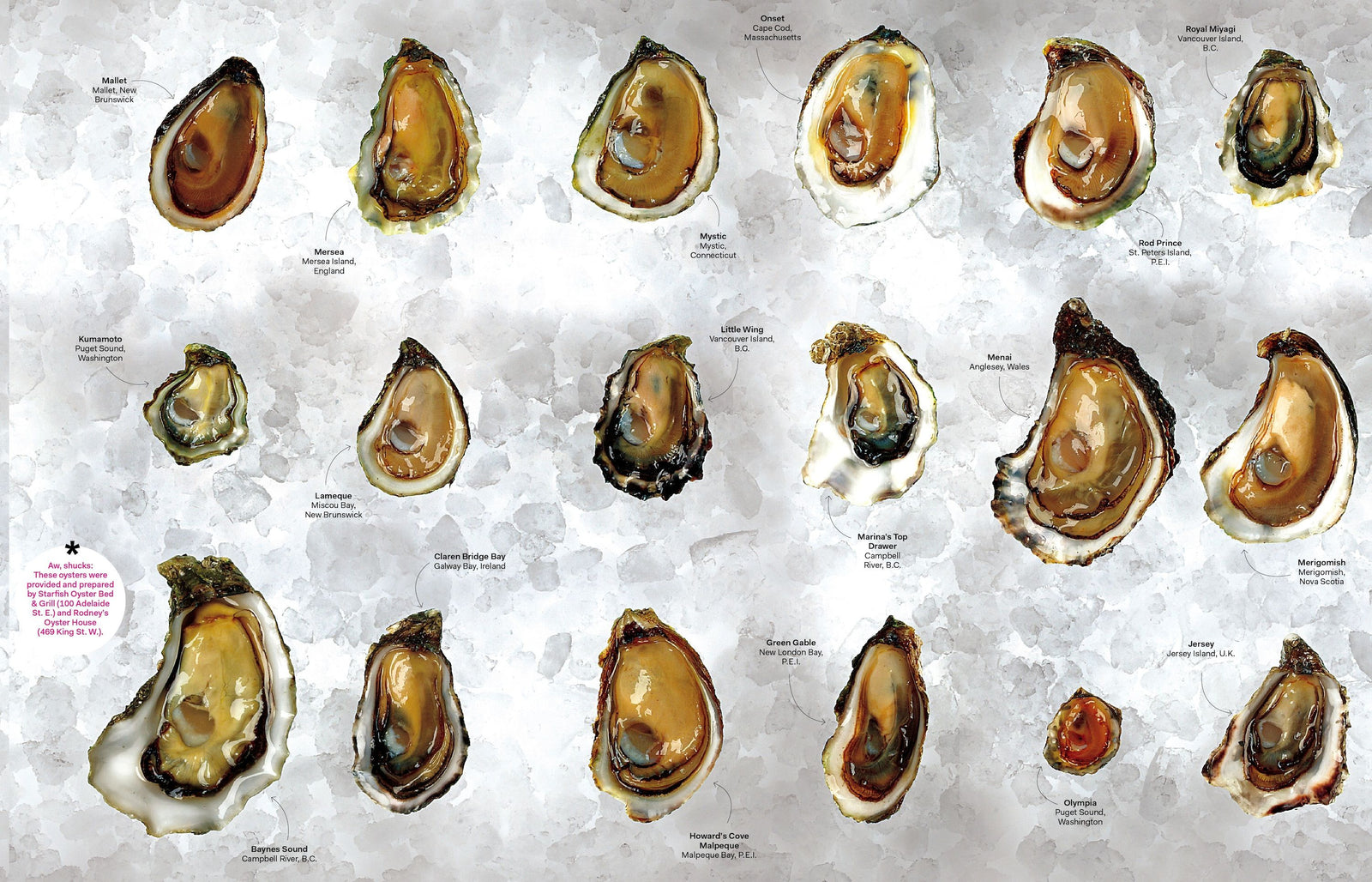
Oysters begin their life as microscopic free-swimming larvae where they are carefully nurtured in heated seawater and fed specially grown algae. A single oyster can produce 20 to 30 million eggs, but, as the progeny grow, this number is greatly reduced by frequent screening so that only the fastest and most robust oyster seed comes through.
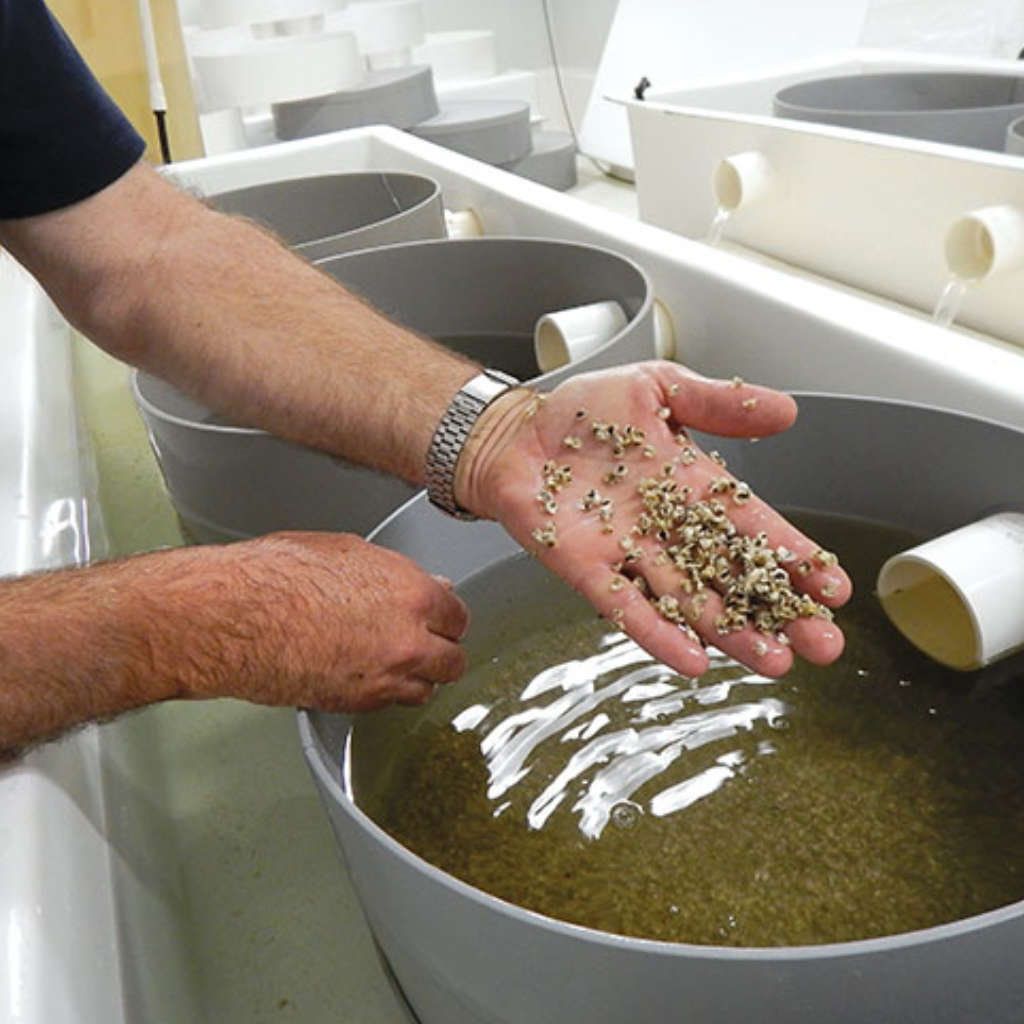
Once the oyster seeds are about 2 mm, they are moved to our nursery site near Bantham in the estuary of the River Avon.
The oyster seeds are placed in grow-out bags on racks. Tumbled by the tide in their protected baskets – the constant tidal energy produces a deeper cup and denser shell.
Throughout the grow-out stage, we regularly pull, clean and grade the oysters. This promotes growth and ensures a deep cup and beautiful shell.
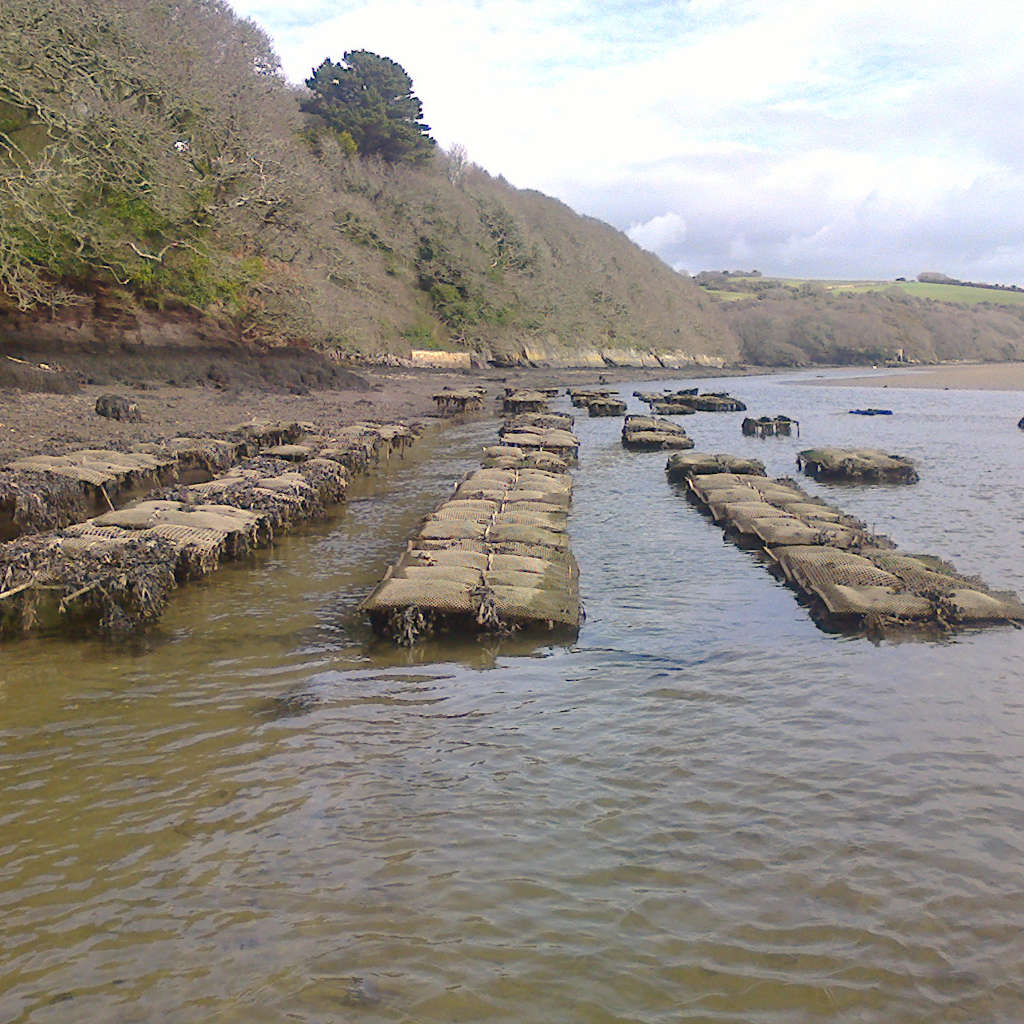
Once the oysters have reached market size (around 3 inches) they are moved to our waters at Porlock Bay in the Bristol Channel where they are finished in oyster grow-out bags on racks.
The Bristol Channel has the second highest tidal range in the world at between 12 and 14 metres and associated fast-flowing strong tidal currents means harvesting in Porlock Bay can only take place at very low tides as the ancient Oyster Perches or Weirs off the beach where our oysters racks are located, are only uncovered at very low tides. Our ability to harvest is also hampered by frequent winter storm surges and wind-driven currents - a cool paradise for oysters perhaps but it can be a very inhospitable environment to work in!
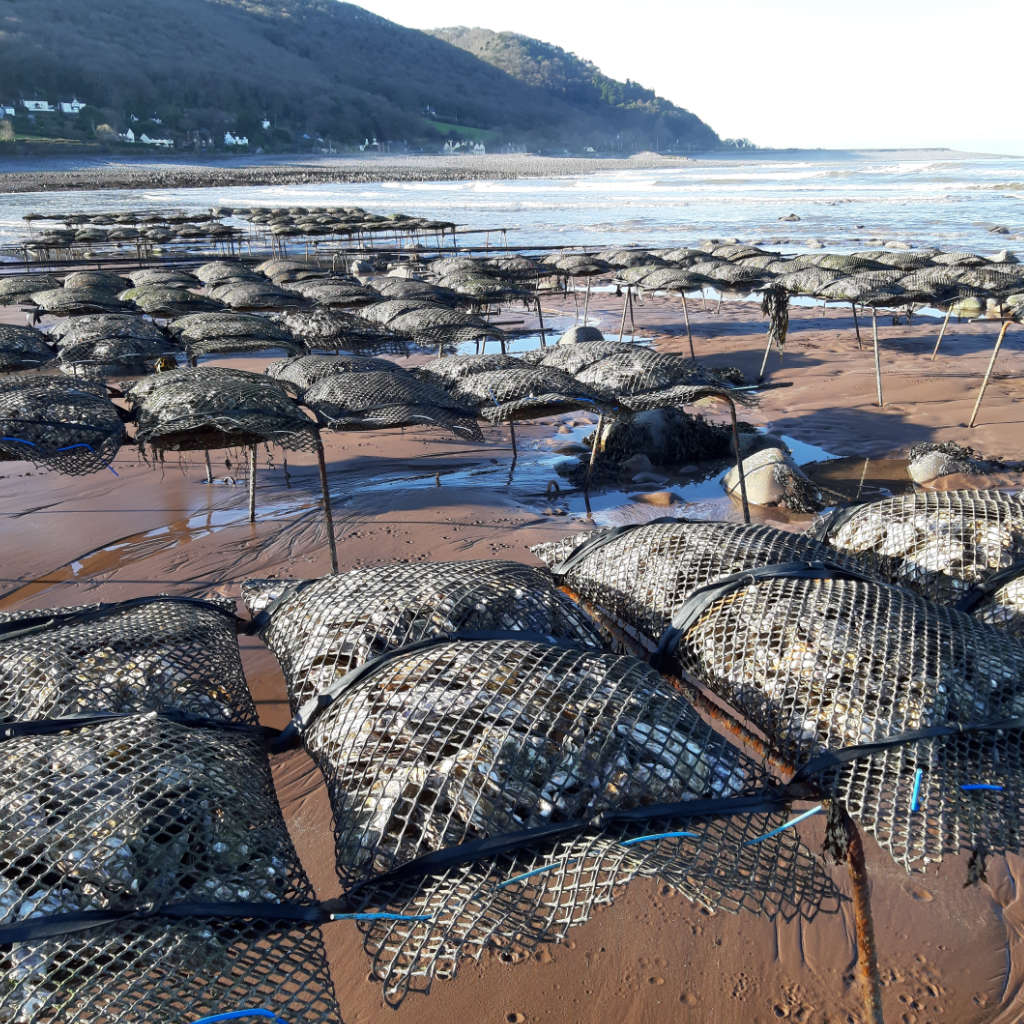
Once harvested the oysters are thoroughly cleaned with fresh water to remove sedimentary deposits from the outer shell before being loaded into tanks of clean seawater in our depuration unit for purification. This process maximizes the natural filtering activity which results in expulsion of intestinal contents and any microbial matter and purges them of any sand or grit contained within the shells. To avoid overcrowding shells are distributed evenly in trays and stacked within the tanks to allow a free and even flow of water through an integrated UV sterilizer system for effective purification. We observe the standard purification cycle time of 42 hours during which the shells are left fully immersed and undisturbed.
The water is maintained to a minimum temperature of 8°C in winter (any lower and oysters cease to filter) and 16 °C in Summer (any higher and they risk spawning) and salinity is maintained between 27-30 ppt reflecting the natural salinity of Porlock Bay.
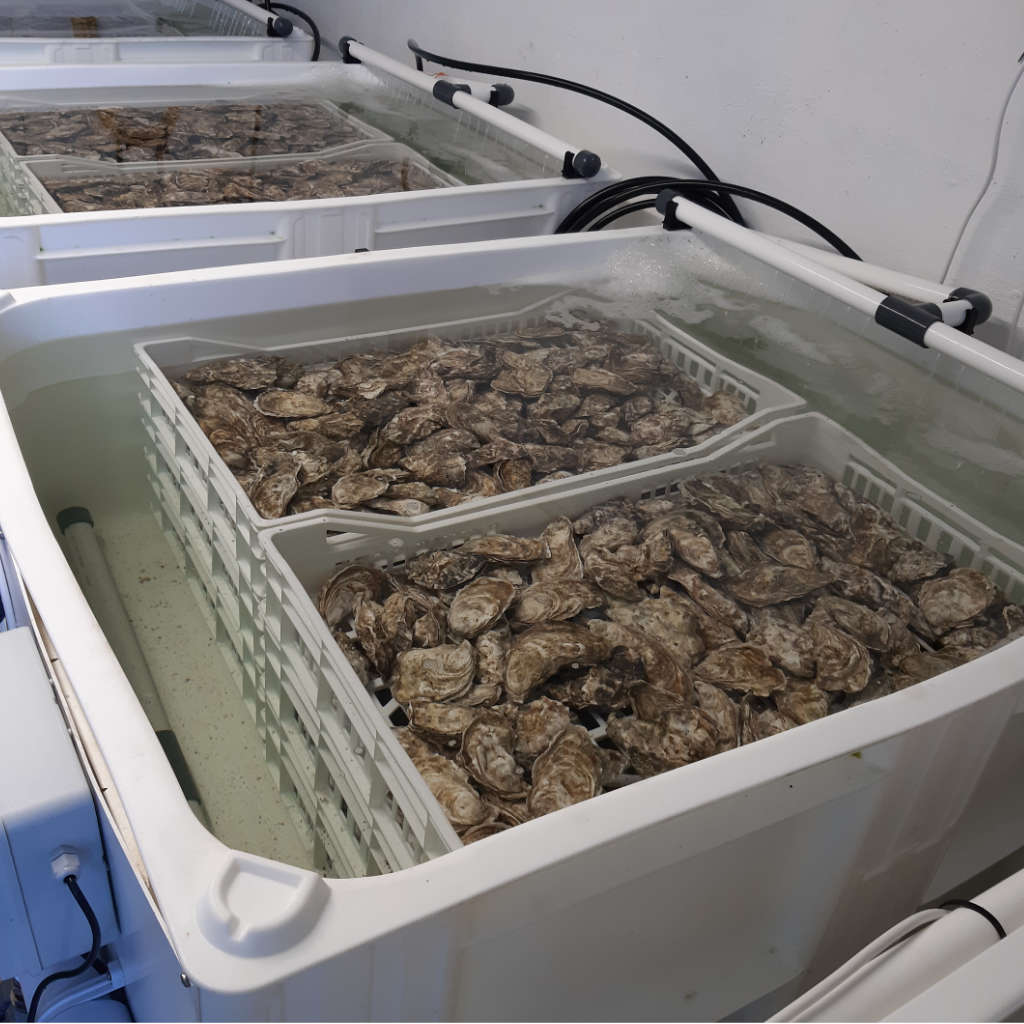
After purification the Oysters are removed from the tanks and gently washed with clean, free running potable water prior to being packed in our beautifully over printed specialist shellfish boxes each containing up to 50 shells and a dated health/ID label before being dispatched for next day distribution to our clients throughout England and Wales.
